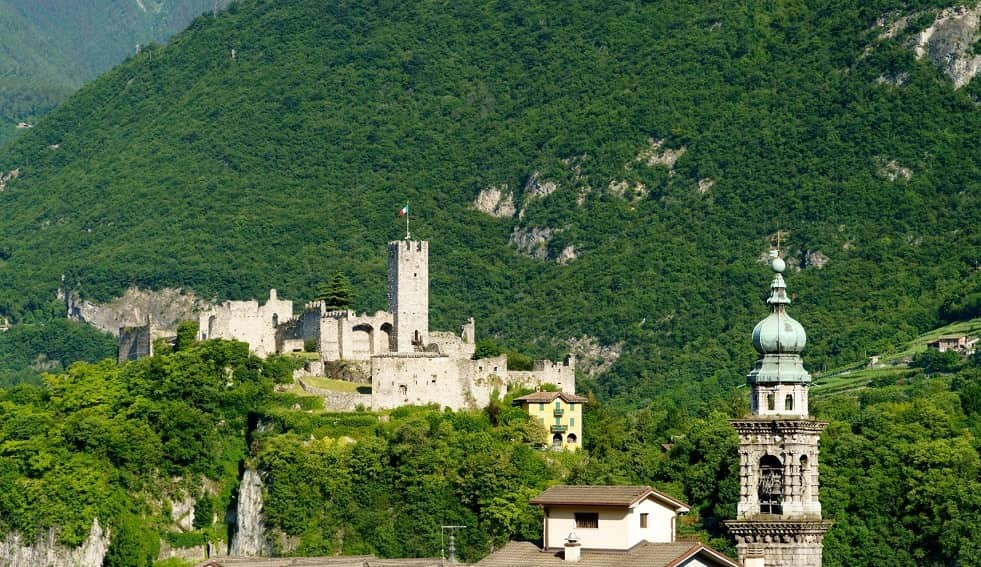We can learn a lot by visiting Val Camonica, the place par excellence in Italy to admire the cave paintings. In fact we can immediately say that more than paintings, it is instead of engravings or technically we speak of "petroglyphs" or even simply "graffiti". The landscapes in the surroundings are unmissable: natural and archaeological parks and reserves.
We find ourselves in a valley immersed in the charm of time before time, inhabited and cared for by an archaic, simple, prehistoric people, who, however, have left us tangible signs of art and beauty. Of the "signs" precisely that Unesco in 1979 recognized as a World Heritage Site, all to live, know, preserve, protect and admire.

Listen to the podcast version of the article with Monna Lisa and Leonardo's voices
The ancient engravings of the Valley
Obviously we are in Val Camonica, in Lombardy, a region of Northern Italy. In the easternmost area in the provinces of the city of Brescia. The area more precisely corresponds to about 24 municipalities, which have the task of guarding an enormous wealth that has crossed the millennia up to us.
The first traces of civilization visible in this area date back to the Copper Age, over 13 thousand years ago, when after a great glaciation the valley immersed in the Alps was permanently inhabited by a population of uncertain origin: the Camuni.
These people have left more than 30 thousand rock engravings, especially in the period around 8 thousand years ago, when they entered the so-called Iron Age and men had learned to forge metals to use them both for hunting and for building tools more resistant over time.
These traces give us remarkable indications about life at the origins of humanity and represent one of the most concrete testimonies of prehistory in Italy.
Val Camonica, the map of the sites of the prehistory

The Camonica Valley is a complex set of wonders; in those territories there are eight parks of prehistoric archaeology equipped for visits, and a system of ten archaeological and ethnographic museums scattered in as many municipalities.
To this beauty is united that one of various medieval suburbs like Bienno, Lovere, Pescarzo, of wonderful castles like that one of Breno, sanctuaries, churches until thermal localities like Boario or Angolo Terme. In all these places it is immediately visible the great cultural heritage that from prehistory becomes our contemporary.
In order to visit them all it is necessary to go up again toward north taking as reference the lake of Iseo. Doing so we meet first the park of supra-municipal interest of Lago Moro, Luine e Monticolo in the municipality of Boario Terme, where there are two sites of great interest: Parco di Luine and Parco dei Corni freschi.
Proceeding northwards we meet the archaeological park of Asinino-Anvòia in the municipality of Ossimo where it is possible to walk inside a luxuriant nature, and among the chestnut trees looking for prehistoric engravings and graffiti. In the park there are also small stems of white stone on which are visible the ancient "signs".
Also at the Natural Reserve Rock Engravings of Ceto, Cimbergo and Paspardo it is possible to make incredible walks, enjoying the immense green of Val Camonica. The paths here are marked in detail. The didactic communication is well present and is able to tell by merging together: Rock Art, Ethnography and Human Archaeology.
The National Park of rock engravings of Naquane was one of the first sites to be discovered and the first of these to be inscribed in the Unesco heritage. In this location are the oldest engravings dating back over 13 thousand years ago. A magical place, absolutely to know.
A smaller park, but not less interesting, is the National Archaeological Park of the Massi di Cemmo where the traces of the Camonica civilization are present close to the mountains.
Not far from this there is the Archaeological Park of Seradina-Bedolina where you can enjoy exceptional mountain views, venturing between these ancient ways. The quality of the signs here is incredible and the first "images" of the domestication of the horse are also visible.
The path of the municipal archaeological-mining park of Sellero has rock engravings that are among the most "recent" compared to those found in the nearby archaeological areas. The most recent of them date back to the II-III century B.C. and depict the classic scenes with animals, fighting, war and hunting.
A walk a little more challenging than the others is the Multipath of the "Coren delle Fate". The path is wilder and has less signage than the others but the area arouses the same great interest and the same immense emotions.

If you enjoyed this content, you can't miss our complete guide to all Unesco sites in Italy, region by region.
About the author
Written on 05/03/2021



Emanuele Castellano
In Val Camonica, you discover that art was born first. Since the beginning, this was an urgent need also for magical, religious and superstition reasons. If you visit these places, you are catapulted into a very ancient age, dating back to even before any complex civilization. Before the Greeks and Romans, before any ancient emperor, before Plato, Hercules, Aristotle or Cicero.